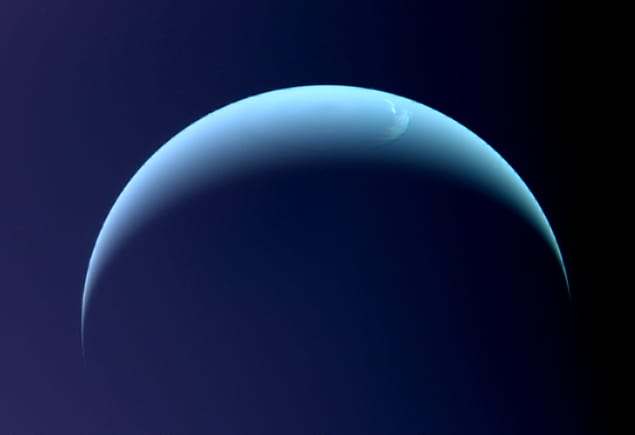
Spacecraft heading to Uranus and Neptune in the next decade could be used to investigate gravitational waves as they venture into the outer solar system. That is according to a new study by a team of Swiss and Danish researchers, who say that examination of the radio signals from far-flung probes might reveal the signature of these subtle ripples in the fabric of space–time as they roll across our planetary neighbourhood (arXiv: 2101.11975).
The scientists say that gravitational waves would make themselves known through a Doppler shift in the transmissions from distant spacecraft. “When a gravitational wave passes through, it can slightly disturb the radio link by shifting its frequency. We can detect the small deviations in the carrier frequency we receive from the spacecraft and deduce that a gravitational wave has passed,” explains Deniz Soyuer from the University of Zurich, who led the work.
Similar gravitational-wave hunts have been attempted – without success – by previous missions. In principle, it is even something that could have been tried with NASA’s New Horizons spacecraft, which is currently traversing the remote region of our solar system known as the Kuiper belt. What a future generation of outer planet explorers would have on their side, though, is time.
Overlapping observations
Proposed missions to Uranus and Neptune – which planetary scientists hope might launch around 2030 – would take many years to reach their targets, meaning they would have several opportunities to carry out searches for the elusive undulations. “There is one-and-a-half to two months of ideal time in a year to do these kinds of observations when the Earth–Sun–spacecraft angle becomes favourable,” explains Soyuer. “So a 10 year cruise time would yield a total of 10 one-and-a-half-month long observations.”
The technique would also not require any dedicated on-board equipment to be fitted to the probes. “All missions already have Doppler tracking instruments on them, since that is how you track the spacecraft and also conduct gravitational field measurements of the planetary gravitational fields,” says Soyuer. “[It] sounds easy in principle, but the changes in frequency that we want to detect are extremely small.”
Another technical challenge is the noise in the data. Among the main contributors to this, adds Soyuer, is “the mechanical noise of the antenna” listening in back on Earth. If those hurdles can be overcome with advances in technology, the missions could potentially detect the gravitational waves given off by bodies – like stellar-mass black holes – whirling around gargantuan black holes, a phenomenon astronomers call “extreme mass ratio inspirals”. They may also be able to pick up the space–time ripples emanating from colliding supermassive black holes.
If detections do occur, they could provide a “nice overlap” with observations by Europe’s upcoming gravitational-wave mission, LISA, says Laura Nuttall from the University of Portsmouth who is a gravitational-wave expert and member of the LIGO scientific collaboration. “[These missions] are more likely to see different events than LIGO/Virgo are sensitive to as they are probing a different part of the gravitational-wave spectrum,” she says. “So just like LISA, [they] would complement LIGO/Virgo.”



